Release Notes > Older Releases > 5.17.0
Webiny 5.17.0 Changelog
See what's new in Webiny version 5.17.0.
Changes
This document highlights the most important fixes, improvements, and features, that were introduced in Webiny 5.17.0.
Please check the Webiny 5.17.0 migration guide for the upgrade steps.
New Security Layer
For the past several months, we’ve been collecting feedback and requirements from community, partners, and clients, related to the inner (and outer) workings of our security layer. In this release, we’re happy to present you with the new security layer, which is a lot more flexible, and can cater for a wide variety of authentication and authorization scenarios.
It can be connected to any IdP with ease, as it now revolves entirely around identities, and not users. User profiles are entirely optional, and Webiny can function without any user-related information, as long as you can verify an identity.
Cognito Admin Users
Admin users logic is now separated from the security layer logic, and has a dedicated npm package, that handles admin user profiles, specifically for Cognito IdP.
On top of that, we’ve migrated user profiles to use IdP sub (a real ID) instead of using an email address as a unique identifier. This means that in new projects, created from Webiny v5.17.0, you will be able to change user emails, because they are no longer used as an ID in the database, and Cognito User Pool configuration was changed to allow this behavior, using the preferred_username attribute. To learn more about Cognito User Pool attributes, visit the official AWS documentation
In the Admin Area project application, we’ve slightly rearranged menu items to reflect these changes in security and user profiles. We now have an Access Management section, which contains API Keys and Groups (which are IdP agnostic), and then there’s a dedicated Admin Users section, which is dedicated to the Cognito Admin Users implemention:
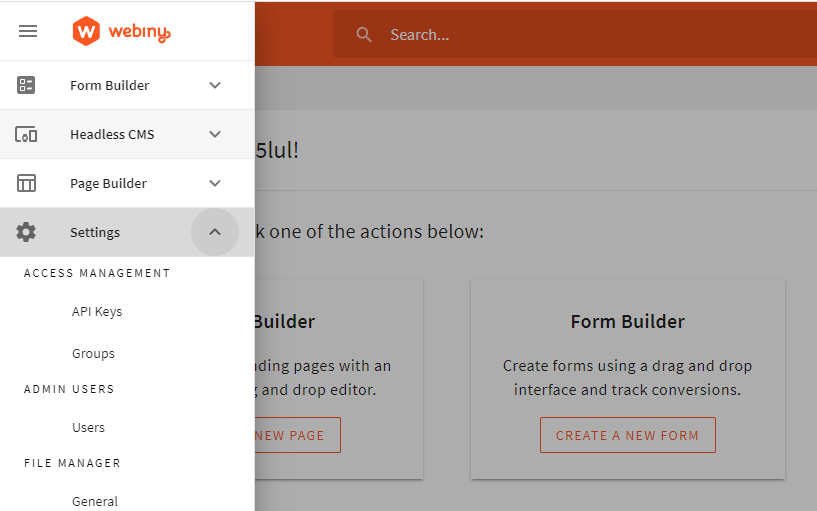 Access Management and Admin Users now have separate sections in the main navigation.
Access Management and Admin Users now have separate sections in the main navigation.Keep in mind that Access Management will always be there, no matter what IdP you use. But Admin Users you see here is our default implementation of users using the Cognito IdP. If you use Okta, or any other IdP, there may be an entirely different implementation of user management, which you can implement yourself.
New System of Events
We’ve developed a new mechanism of publishing and subscribing to events, to prevent explosion of plugins in the GraphQL API. Our new applications, like tenancy, security, and several others, now use this new system of events to make it easier to discover and extend functionality of Webiny.
Instead of creating a new plugin type for every entity or event, events are defined on the application level (in the context object) and are easily discoverable in any IDE:
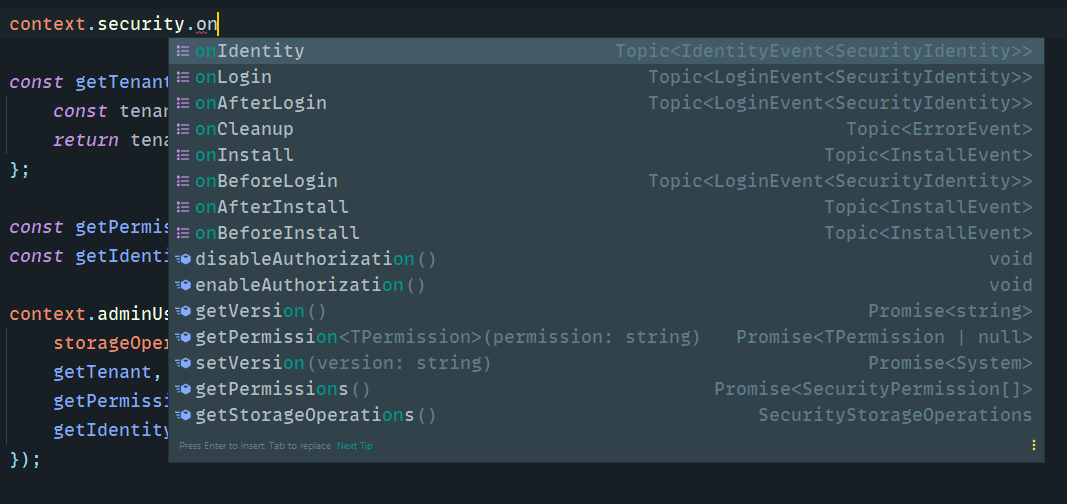 Discover application events by typing on to filter out event topics.
Discover application events by typing on to filter out event topics.This greatly simplifies the process of subscribing to multiple events across the system, using a simple ContextPlugin plugin:
There’s one major benefit of adding functionality to your system like this: you don’t have to drill the context object all the way to the place where plugins are invoked. With this approach, apps remain free of the notion of context and can be reused and instantiated in separate Lambda functions, that may not even be GraphQL. Utilizing Javascript’s lexical scope
ContextPlugin, will have access to the context, without apps even knowing that it exists.
This greatly improves testability and reusability of parts of the system, because they don’t depend on the unknown internals of the context object.
Besides, less plugins to learn and maintain is always good, isn’t it? :) Whenever you want to extend some app, you know you have to start with a ContextPlugin.
The new system of events is not yet propagated through all the Webiny applications, but this is how all new applications expose their events. In the near future we’ll migrate all the apps to follow this system of events.
Enterprise Features
NOTE: the following features are only available to Enterprise License users. If interested, book a call
to find out more.
Multi-Tenancy
Our GraphQL API and Admin Area application now officially support multi-tenancy, with a new Tenant Manager module. This allows you to build SaaS-like applications, where tenants have their data completely isolated from each other, using one deployment of Webiny.
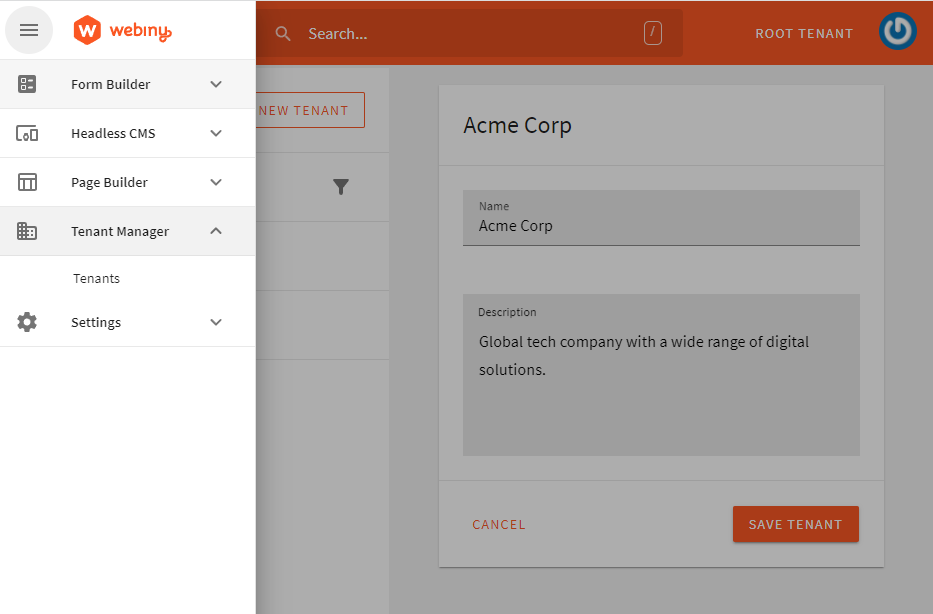 Tenant Manager module allows you to create new tenants and switch between them.
Tenant Manager module allows you to create new tenants and switch between them.Okta Integration
Webiny can now be integrated with Okta IdP for both the GraphQL API and Admin Area app. You have full control over your Okta configuration and how you perform authentication and authorization. With extensive set of events in our new security layer, you can configure any authentication/authorization flow imaginable.
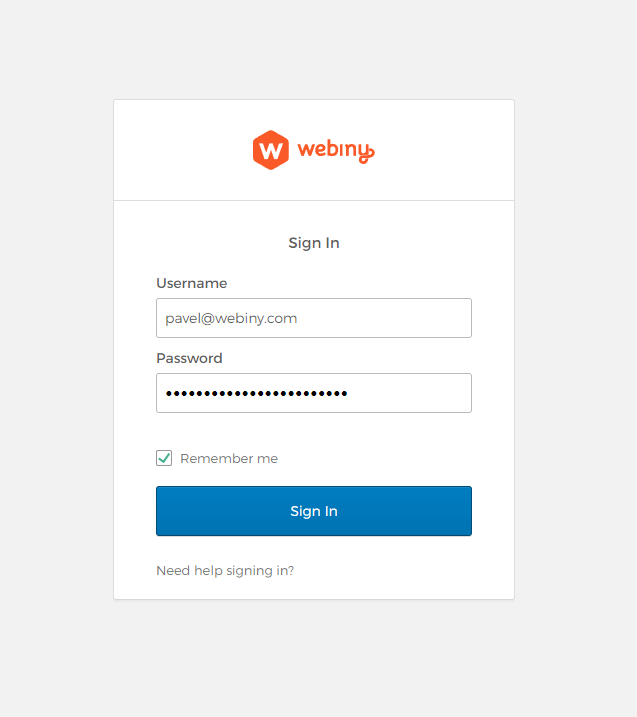 Okta login using Okta's React SDK.
Okta login using Okta's React SDK.Other
Sort Settings for Pages List Element (#1997 )
)
In one of the recent releases, we did some updates to the Page Builder GraphQL schema, to use the same naming convention and parameter types across similar queries within Webiny. With that, we’ve broken the Pages List element within our Page Builder. 😢
Big shout out to @dibenso
Menu Component Positioning (#2006 )
)
Menu component now positions correctly when rendered at the bottom of the view, and is not being cut off by overflow: hidden parent element.
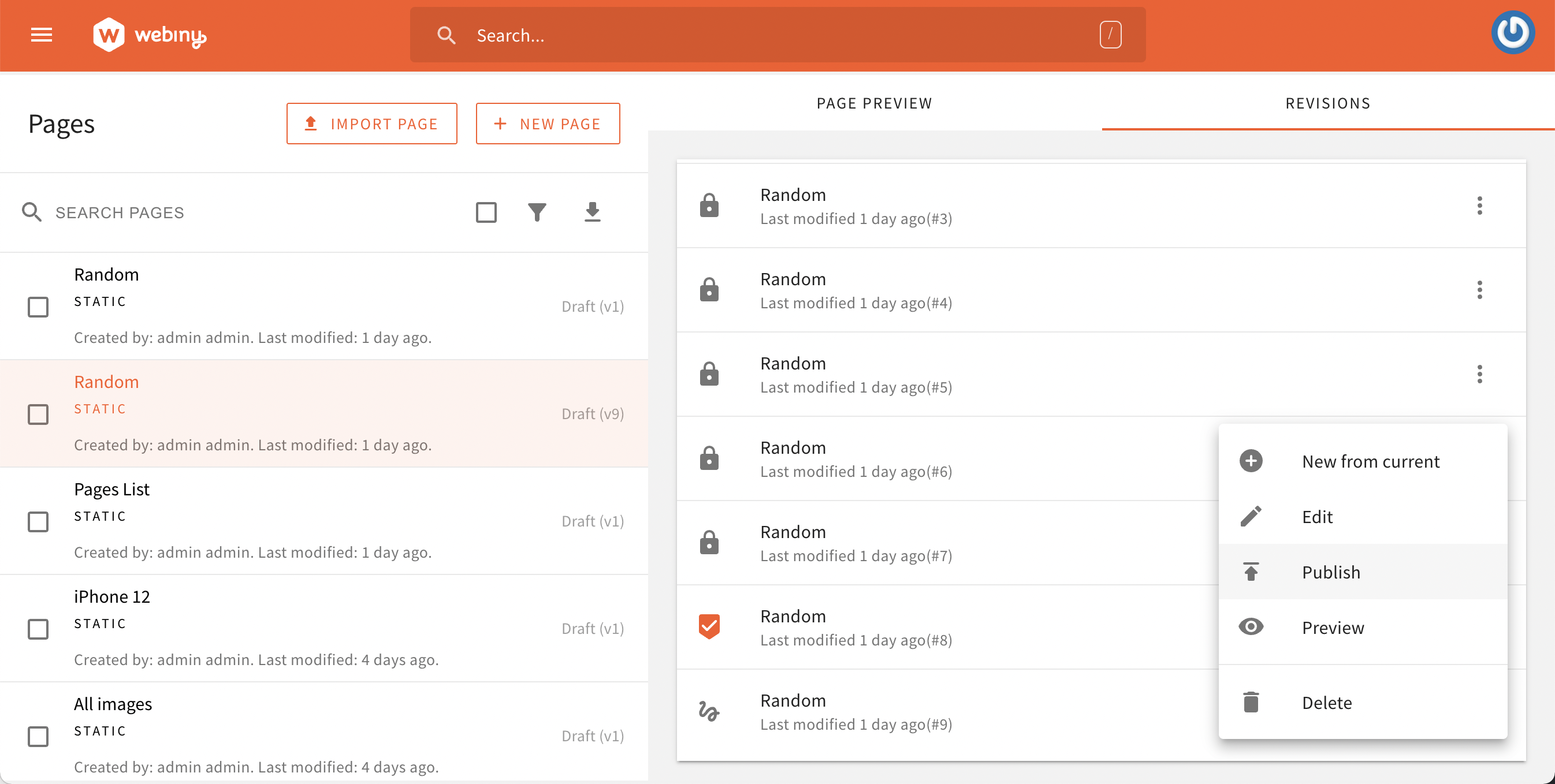 Menu now changes direction depending on its location in the view.
Menu now changes direction depending on its location in the view.Shout out to @econtentmaps
Grid/Cell Element Width in the PB Editor (#1412 )
)
In the Page Builder Editor, setting the width of a grid to 50% would make the width of a child cell also be 50% (which is relative to the parent grid, resulting in a wrong final size). This is now fixed, and grid cells are no longer affected by changes of width on the parent grid element.
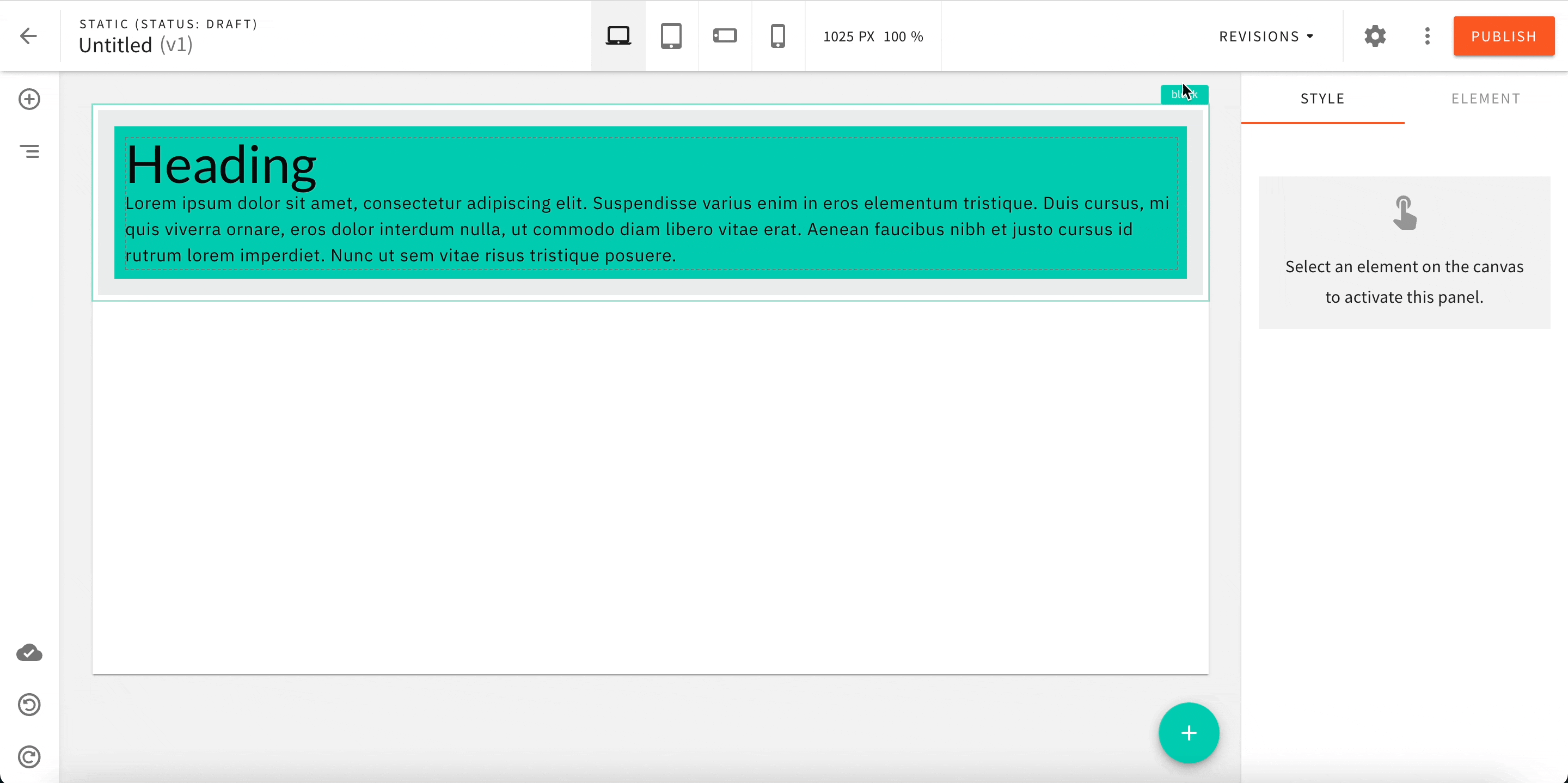 gridWidth
gridWidthThis one was also reported by @econtentmaps
React Form Component
Form component has undergone some refactoring, and was migrated from a class component to a functional component. With this, each <Form> is now effectively a React Context provider, and you can bind to a form using the useBind() hook. More on this coming in the docs in the near future.